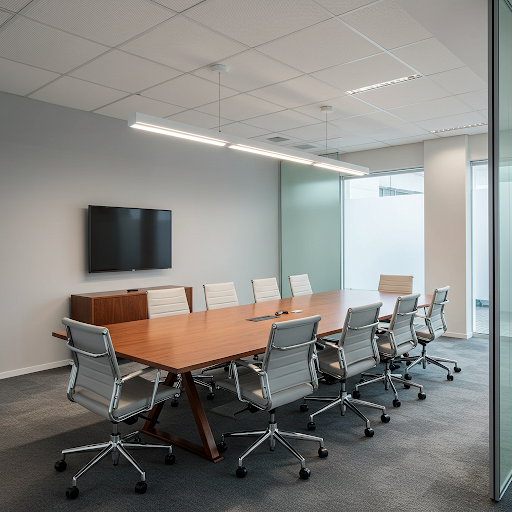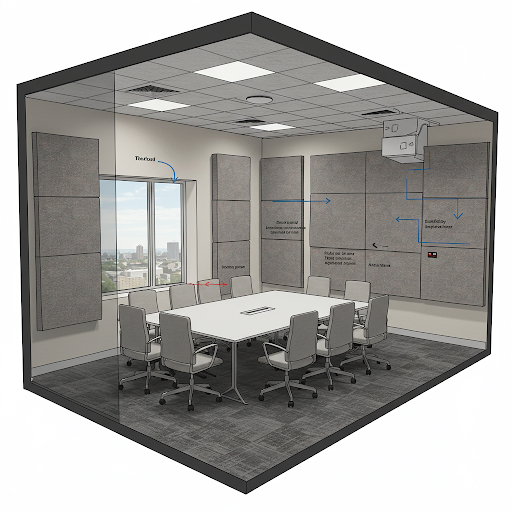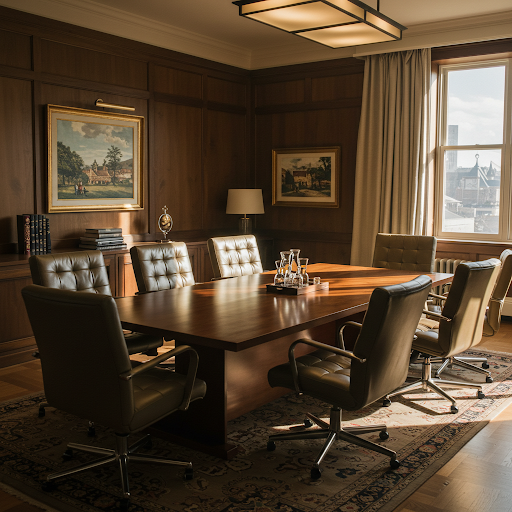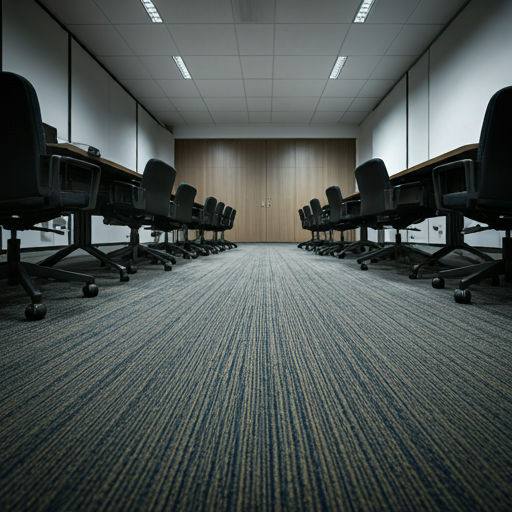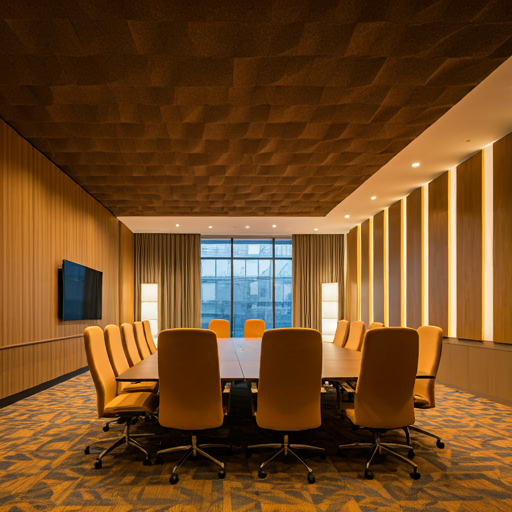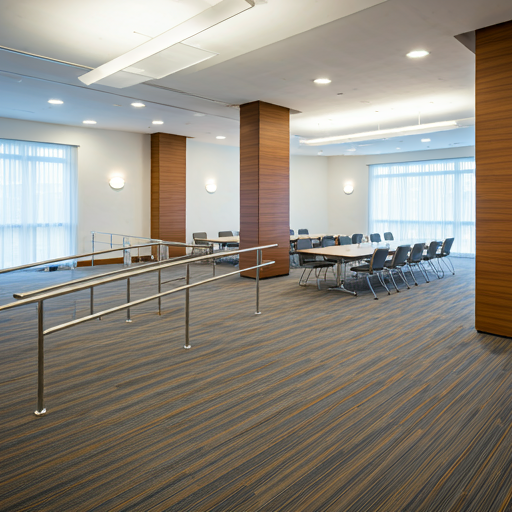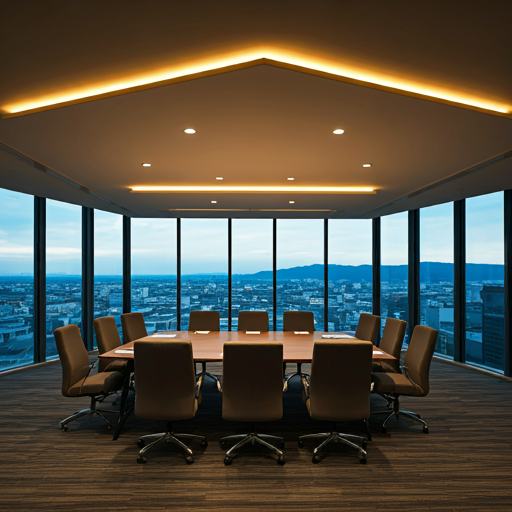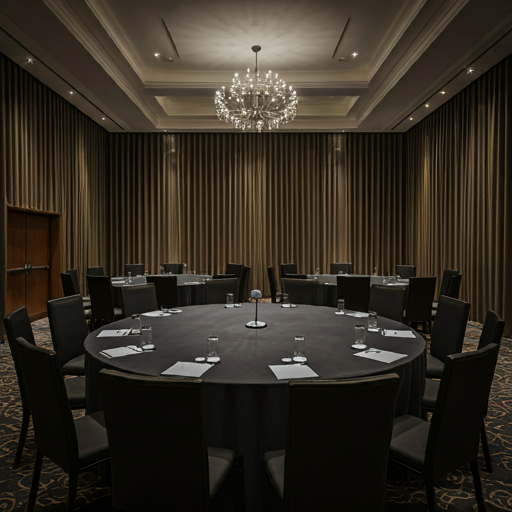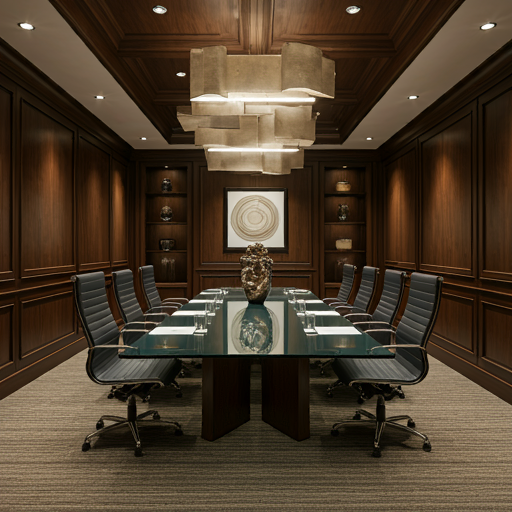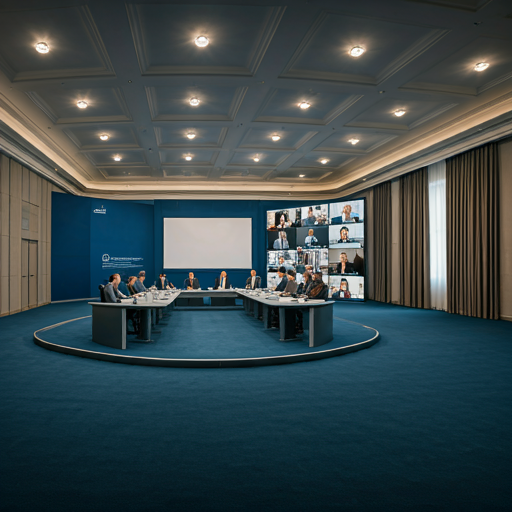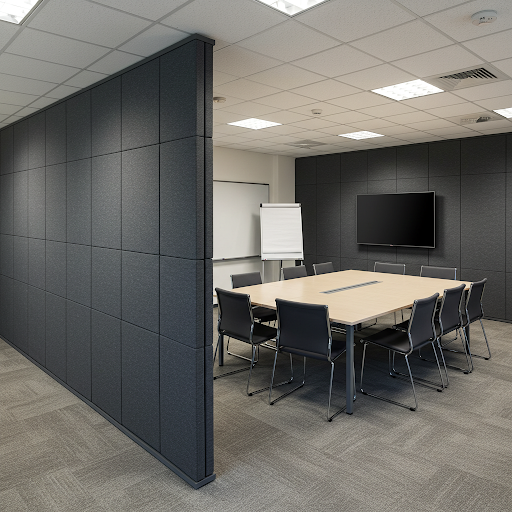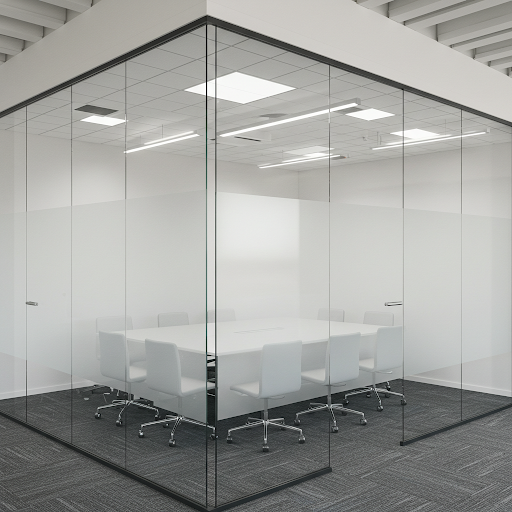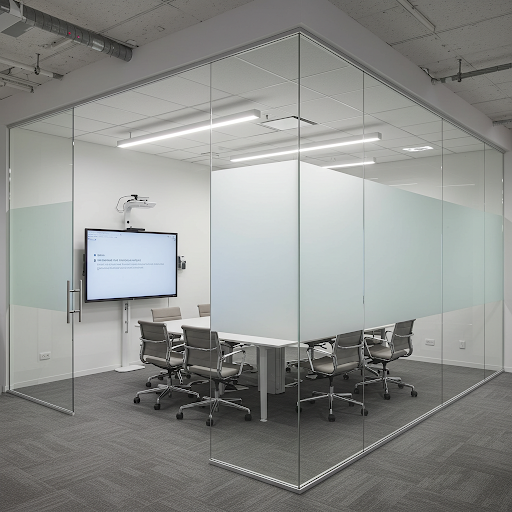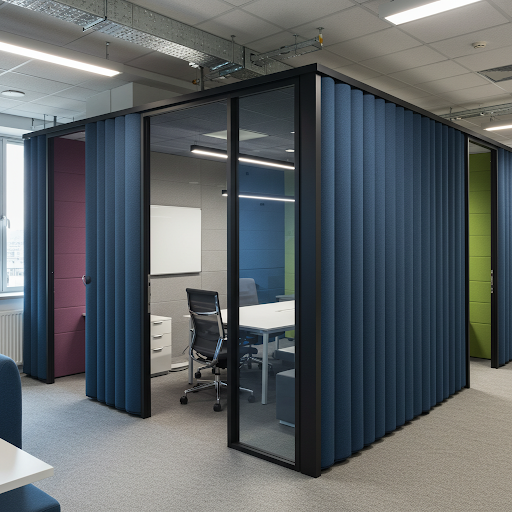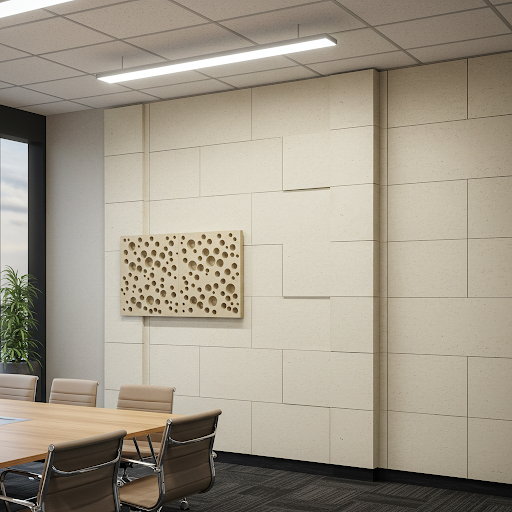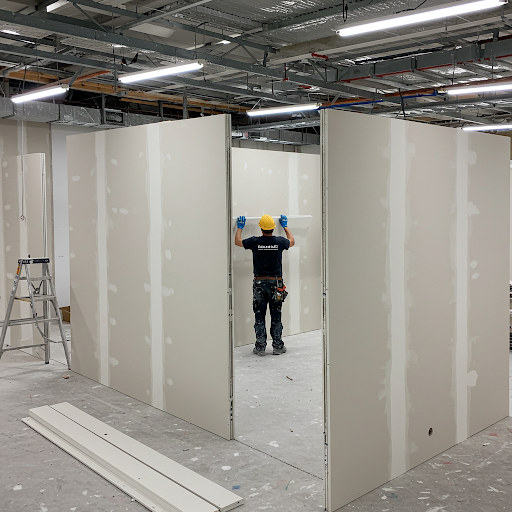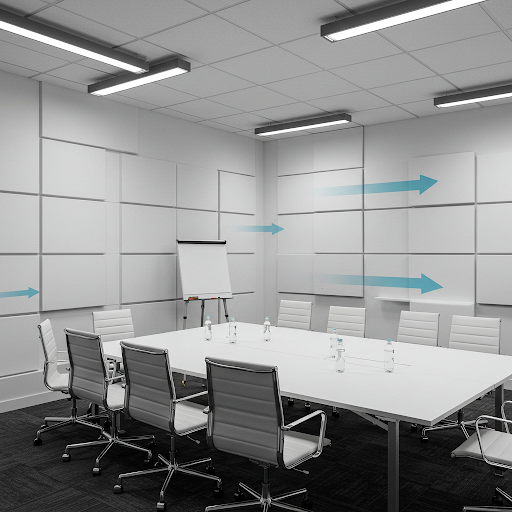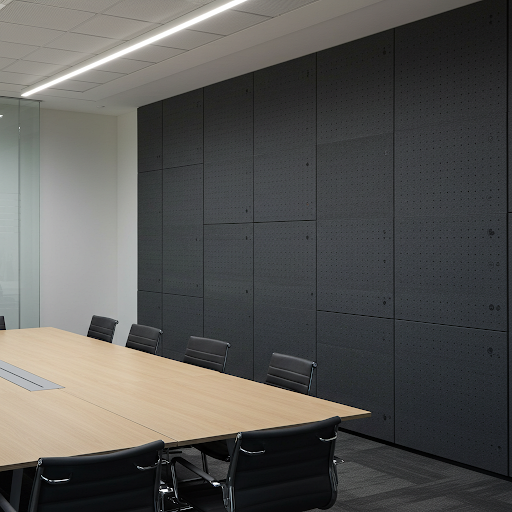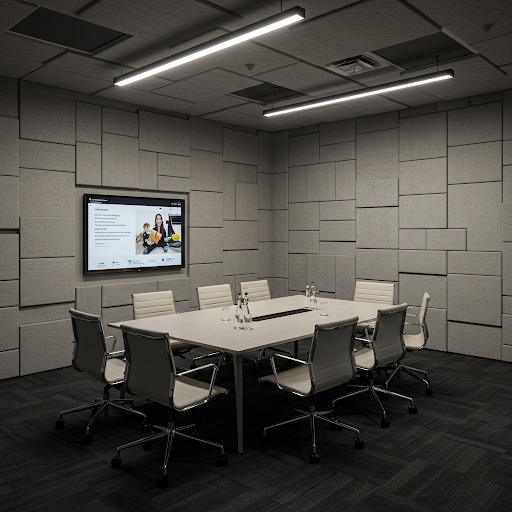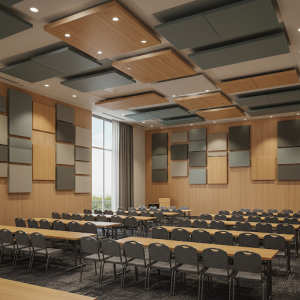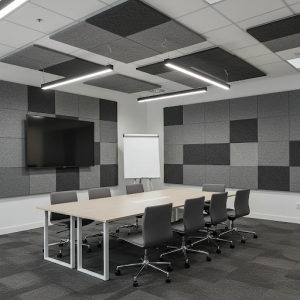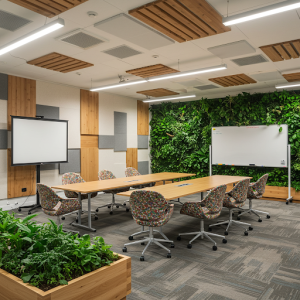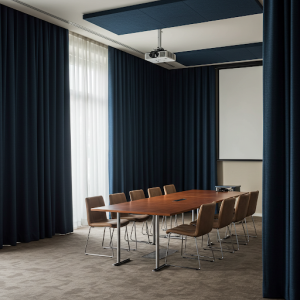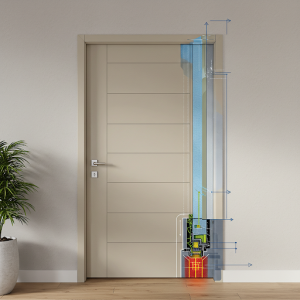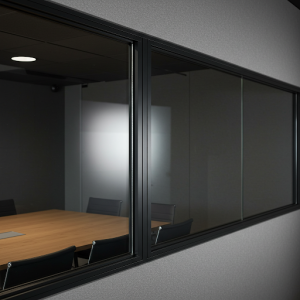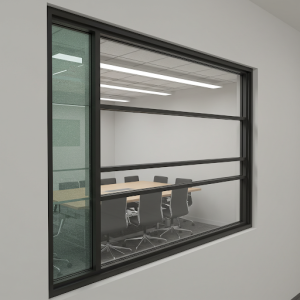Description
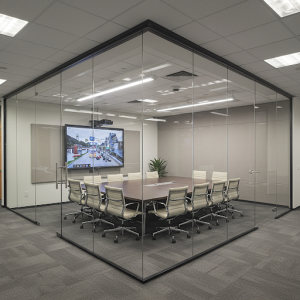
Conference room soundproofing requires a holistic strategy. When moving to a new office, there are a lot of things to consider, such as interior design and layout. One thing that is often overlooked is the soundproofing of the conference room. When visiting other companies, if the voices in the conference room echo throughout the office, anyone would be worried about the risk of information leaks. It is important to put effort into soundproofing the conference room, as it will also increase the company’s credibility.
In this article, we will look at the root causes of sound leakage and explain the measures you can take to create a conference room that does not leak sound. To make your new office a pleasant working environment, it is important to plan your measures.
The place that should be given the highest priority is the conference room. Since important meetings are held in conference rooms every day, a lack of soundproofing can cause many problems. It not only prevents the leakage of meeting information, but also reduces noise outside the conference room. If the office and the conference room are next to each other with only a single wall between them, there is a possibility that the voices in the meeting will be too loud and people will not be able to concentrate on their work.
In such cases, there are concerns about not only the company’s losses due to information leaks, but also a decrease in productivity due to employees’ reduced concentration. Make soundproofing a priority.
Professional conference room acoustic testing

Acoustic testing is essential for evaluating conference room sound insulation. Using specialized equipment like sound level meters and analyzers, professionals measure sound transmission and reverberation. This process identifies weak points, such as gaps in seals, inadequate wall or window construction, or HVAC noise. Testing provides precise data to determine the Sound Transmission Class (STC) and Noise Reduction Coefficient (NRC) values. Based on these results, targeted measures, like sealing gaps, adding acoustic panels, or upgrading windows, can be implemented to achieve optimal sound insulation. This ensures a quiet and productive conference environment.
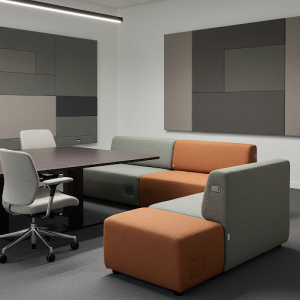
Where in the conference room do you need soundproofing?
Before looking at specific examples of soundproofing measures, let’s first look at the causes of sound leakage. By looking at the causes, you can see the points you need to be careful of when taking soundproofing measures. The leakage of voices from conference rooms can interfere with employees’ work. And the risk of information leaks cannot be ignored, so soundproofing measures are essential in this space.
Gaps (meeting room doors, windows, partitions, etc.)
The inherent mobility of doors, windows, and removable partitions presents a challenge in soundproofing, as gaps inevitably facilitate sound leakage.
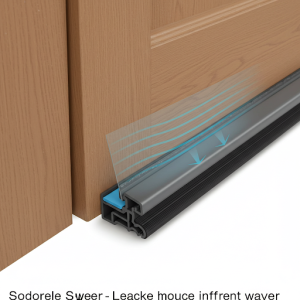
Sound vibrations (walls, floors, etc.)

Sound can travel to others through the air and objects. In technical terms, the former is called “airborne sound” and the latter “structure-borne sound.”
Structure-borne sound is sound that travels through floors, walls, ceilings, etc., as vibrations or impacts. It is important to be careful because it is not a visible cause of sound leakage, like gaps.
This is because thin materials used for conference room walls and floors have low sound insulation and sound absorption properties. And sound can easily travel. Even if this is not intentional, sound vibrations can travel through the walls and floors, and even the concrete of the structure, causing the sound to reverberate downstairs, potentially resulting in noise problems.
As you can see, the causes of noise that need to be prevented in the conference room are gaps that allow sound to leak out and materials that transmit vibrations.
In other words, effective soundproofing measures require knowing how to prevent or reduce unnecessary gaps and vibrations.
Sound-absorbing curtains
Conference room curtains serve a critical function beyond mere window dressing. Designed with sound absorption in mind, they mitigate external noise infiltration, fostering a more conducive environment for meetings and presentations. These specialized curtains act as a barrier, diminishing sound waves that would otherwise penetrate through windows and doors. The materials used in their construction, such as dense fabrics, vinyl, or even aluminum, are selected for their acoustic properties. This ensures that conversations within the conference room remain private and undisturbed. Available in a variety of sizes and designs, these curtains can be tailored to fit diverse architectural layouts and aesthetic preferences, seamlessly integrating functionality with visual appeal. The selection of appropriate materials and designs is crucial for achieving optimal sound reduction, contributing to a more professional and focused meeting space.
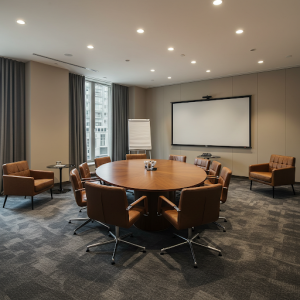 Soundproofing of doors
Soundproofing of doors

To achieve optimal noise reduction in conference rooms, the installation of double doors with an intervening air gap is highly recommended. This configuration creates a potent sound barrier, significantly diminishing the transmission of unwanted noise. The air gap itself acts as an effective sound insulator, disrupting the passage of sound waves. Furthermore, this double-door setup provides added thermal insulation, enhancing energy efficiency.
The doors themselves can be constructed from a variety of materials, including wood, metal, or a combination thereof, allowing for flexibility in design and aesthetic considerations.
To further bolster their sound-absorbing properties, a specialized coating can be applied to the door surfaces. This additional layer works to dampen sound vibrations, contributing to a quieter and more focused meeting environment. The use of double doors, in combination with careful material selection and specialized coatings, ensures that the conference room remains a haven of tranquility, free from distracting external noise.
Meeting room engineering systems
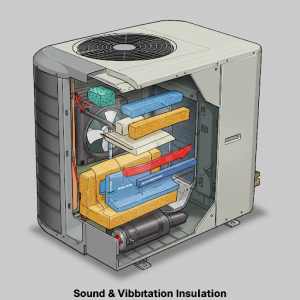
Sound and vibration insulation of engineering equipment (reduction of noise from ventilation and air conditioning systems, vibration insulation of refrigeration machines, chillers, etc.) is carried out using similar methods, as for technical rooms of cinemas or multiplexes. Soundproofing rolls, slabs, panels, socket boxes, damping tapes, and soundproof vibration hangers from MaxForte are suitable for solving such problems.
Conference room soundproofing target values
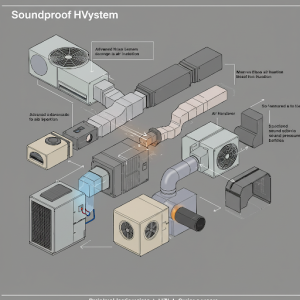
There are guidelines for how people perceive sound. Knowing the target sound level (guideline) for soundproofing measures in advance can be a guideline when building a new office or carrying out construction work.
An important indicator for soundproofing measures is the “D value.” The higher the D value, the better the sound insulation. The target D value for conference rooms, etc., is roughly D-50 to D-60.
When designing and using auditoriums and conference rooms, it is important to consider the following noise insulation indicators:
- The maximum permissible level of noise penetrating the auditorium, according to the standards “Noise Protection,” is 40 dB.
- required speech intelligibility – more than 75%;
- minimum sound insulation between classrooms — 47 dB;
- The recommended reverberation time is 1 sec.
Use high-density, sound-absorbing materials for meeting room walls and floors
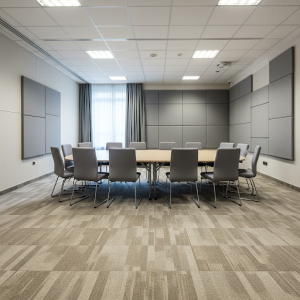
If you can choose the material of your conference room walls, denser materials such as concrete will provide better sound insulation.
For sound leaks through existing walls, you can take measures by adding partitions. But for better soundproofing, choose partitions made of highly sound-absorbing materials such as glass wool or rock wool.
Soundproofing measures can also be applied to conference room floors. For example, by using a carpet, which has higher sound absorption than flooring. A tile carpet can be used, which can be freely adjusted to fit the size of the section.
Tile carpet can be resistant to dirt even when worn with shoes. So it kills two birds with one stone by providing soundproofing effects. In the unlikely event that it does get dirty, it is possible to replace only a portion of it. Making it very convenient in the medium to long term.
Do not leave any space between the meeting room partition walls
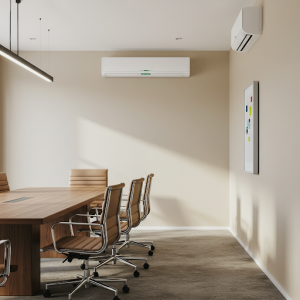
If you are using a partition that requires installation work to reach the ceiling, you need to be careful about the space between the ceiling and the transom, called the rabbet.
There are two types: one with a transom and one without, and it is better to choose the latter when considering soundproofing.
However, the downside is that since the space is completely divided, you may need to install new air conditioners and lighting in the area. Some partitions also have a transom that opens and closes. These are very convenient as they can be opened and closed depending on the situation.
Double-glazed windows
Twin-glazed windows stand out as a highly effective solution for soundproofing, particularly in environments like conference rooms where noise reduction is paramount. Their design strategically combines plate glass on the interior side with double-glazed glass on the exterior. This configuration, coupled with a specialized metal film coating sandwiched between the glass layers, creates a formidable barrier against sound transmission. The multi-layered structure of twin-glazed windows inherently disrupts sound waves, significantly minimizing their penetration. This overlap of materials not only enhances acoustic performance but also provides superior thermal insulation. The trapped air or gas between the glass panes, along with the metal film, reduces heat transfer, contributing to energy efficiency. Consequently, twin-glazed windows offer a dual benefit, effectively addressing both soundproofing and insulation needs, making them a versatile choice for a range of applications beyond conference rooms.
Some benefits of conference room soundproofing
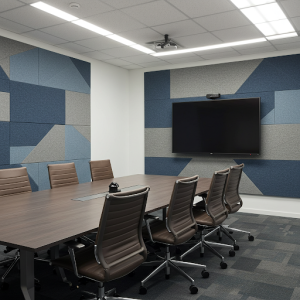
Imagine you’re in a conference room where an important corporate meeting is taking place. While in the background, disturbing sounds from outside continue to interrupt the important topics being discussed. Unwanted noise—from office equipment to conversations in the hallway—can seriously affect concentration and productivity in adjacent rooms. That’s where soundproof ceilings come in. Soundproof ceilings, specifically designed to reduce noise levels, offer several benefits to conference rooms in commercial spaces.
Choosing the right ceiling is a pragmatic choice that will make the conference room a useful, distraction-free environment, not just aesthetically pleasing.
Increased privacy for sensitive meeting discussions
 Privacy is a major consideration when choosing soundproofing for conference rooms. From business negotiations to private strategy talks, important meetings require a quiet space free from outside noise leaks. These acoustics reduce the likelihood of overhearing private conversations in adjacent hallways or rooms.
Privacy is a major consideration when choosing soundproofing for conference rooms. From business negotiations to private strategy talks, important meetings require a quiet space free from outside noise leaks. These acoustics reduce the likelihood of overhearing private conversations in adjacent hallways or rooms.
Soundproofing ensures the privacy of every meeting, allowing you to be confident that only the intended participants can hear what is said.
Conference room soundproofing improves focus and concentration
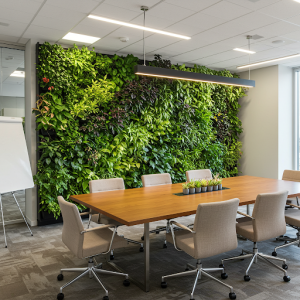
Noise in a conference room can cause participants to lose focus on the topic at hand and make it difficult for them to concentrate. Soundproofing the meeting room minimizes these distractions so that everyone can stay focused and engaged. Reducing outside noise allows employees to fully concentrate on the conference, thereby increasing overall productivity.
By encouraging concentration, a well-separated conference room promotes more orderly and successful debates.
Effective meeting echo and reverberation control
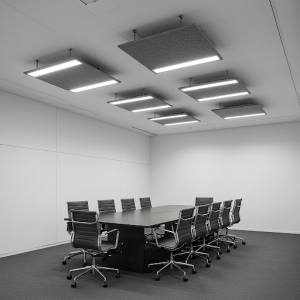
In many commercial spaces, sound bounces off hard surfaces, creating echoes that can distort speech. In conference rooms with high ceilings or without acoustic treatment, this is especially problematic. By absorbing noise and preventing it from bouncing around the room, soundproof ceilings solve this problem.
Clear communication is achieved by ensuring voices are clear and undistorted, making meetings easier.
Conference room soundproofing for increased clarity of communication
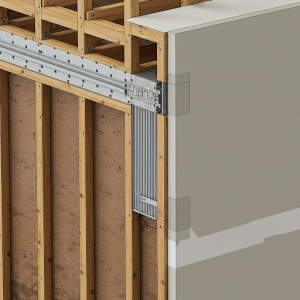
In conference rooms, especially when multiple people are speaking or when audiovisual equipment is used, clarity is essential. Without soundproofing, voices can blend, and it can be difficult to understand what is being said. With their sound-absorbing properties, soundproof ceilings help make voices more unique, thereby improving communication.
When precise information needs to be conveyed, such as in presentations or strategic planning conferences, this advantage is especially important.
Conference room soundproofing from external factors
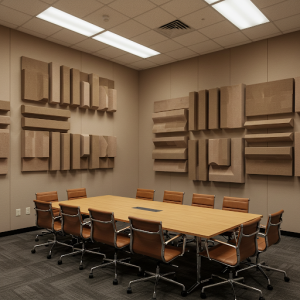
Meetings can be interrupted by noise from outside the conference room, ranging from street traffic and workplace gossip to machinery. By isolating the space from external noise sources, soundproof ceilings help create a quiet environment. This ensures that only the internal sounds of the conference are heard, so avoiding external influences can be distracting.
Your conference room will become a quiet haven, ideal for intense conversations by reducing outside noise levels.
Acoustic comfort for long meetings
If the acoustics in a room are poor, long meetings, especially those that last several hours, can be somewhat tiring. By regulating sound levels and therefore reducing noise fatigue, conference room soundproofing helps create acoustic comfort. Participants are less likely to feel fatigued without constant background distractions, increasing their engagement throughout the session.
Soundproof ceilings help keep everyone comfortable and awake in spaces where long meetings are planned.
Improving the performance of meeting room AV equipment
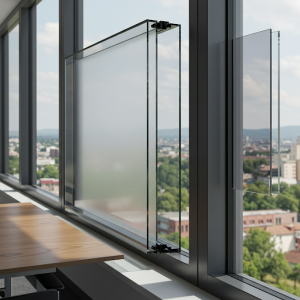 Modern conference rooms are often equipped with audiovisual equipment for presentations, video conferencing, and group projects. Outside noise can disrupt these systems, making it difficult for everyone to hear the speaker or understand the presentation clearly. Soundproofing improves the performance of video conferencing, speakers, and microphones, ensuring smoother meetings.
Modern conference rooms are often equipped with audiovisual equipment for presentations, video conferencing, and group projects. Outside noise can disrupt these systems, making it difficult for everyone to hear the speaker or understand the presentation clearly. Soundproofing improves the performance of video conferencing, speakers, and microphones, ensuring smoother meetings.
Compliance with noise standards
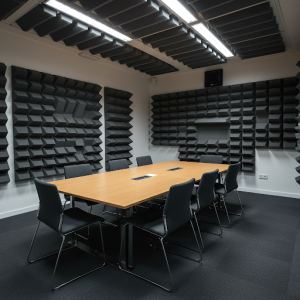
Some commercial buildings, such as those located in mixed-use areas or near transit centers, are subject to noise regulations that require sound insulation within the structure. By reducing the transmission of sound between spaces and from outside sources, sound-attenuating walls, windows, doors, and ceilings allow businesses to comply with municipal noise regulations.
In sectors that must meet strict environmental and legal criteria, this is particularly important.
Increased meeting room productivity
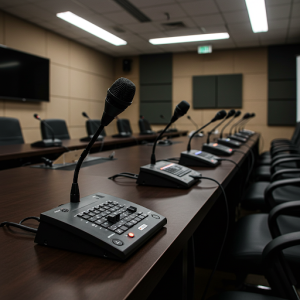
Noise levels directly impact the effectiveness of a conference room meeting. Soundproof ceilings help companies ensure better communication, increase meeting productivity, and reduce time spent repeating material. This results in faster decision-making and more active meetings.
A quiet room helps participants react quickly and think clearly, thereby contributing to higher performance.
Meeting room aesthetic appeal and professionalism
Soundproof ceilings improve acoustics and help define the overall appearance of a conference room. Modern soundproof ceiling tiles with a variety of finishes and patterns allow you to combine design and practicality. This helps businesses present themselves as impeccable and professional.
A well-designed, soundproofed meeting room makes a good first impression on meeting participants, including clients and partners.
Long-term economic meeting room efficiency
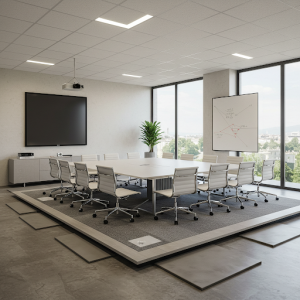
While installing soundproof ceilings may require an initial cost, the savings over time make them a smart option for conference rooms. These ceilings reduce the cost of sound-absorbing materials, operational disruption caused by noise disturbances, and the need for regular maintenance of other acoustic solutions.
Any commercial space would be wise to invest in soundproof, low-maintenance and durable ceilings.
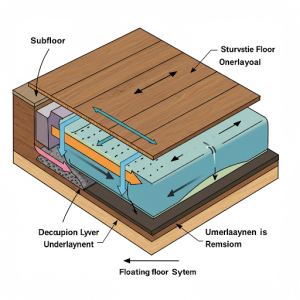
A floating floor system, decoupling the flooring from the subfloor, reduces vibration transfer.
Noise control in open-plan offices
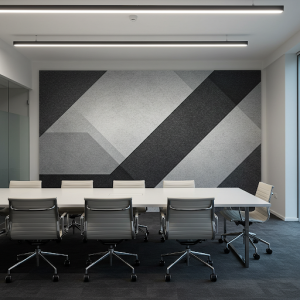
The open floor plan used in many modern office buildings allows noise to travel between rooms. Soundproof walls and ceilings, especially help conference rooms in such buildings, to isolate sound from the rest of the open workspace. This ensures that meetings in the conference room remain confined without disturbing employees working in adjacent rooms.
In large open spaces, soundproof ceilings also help to avoid the sometimes occurring echo effect, thus creating a more orderly and calm atmosphere.

